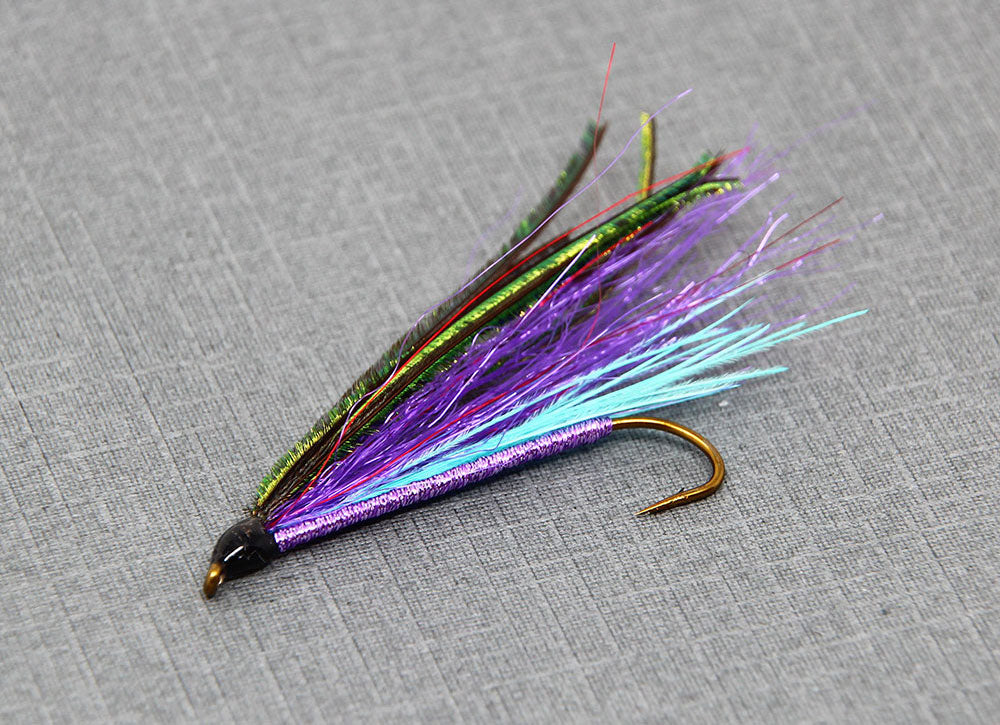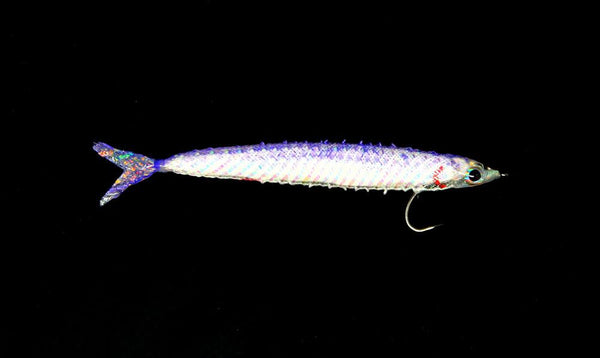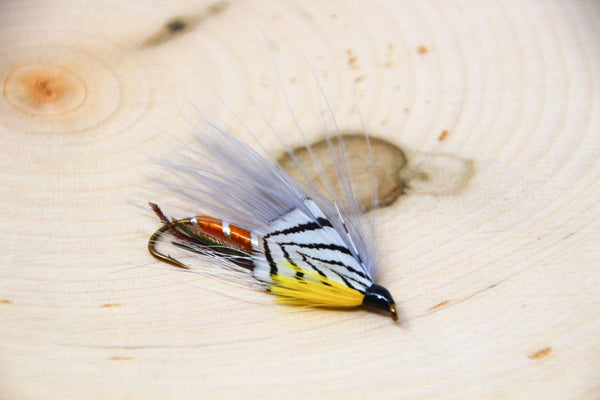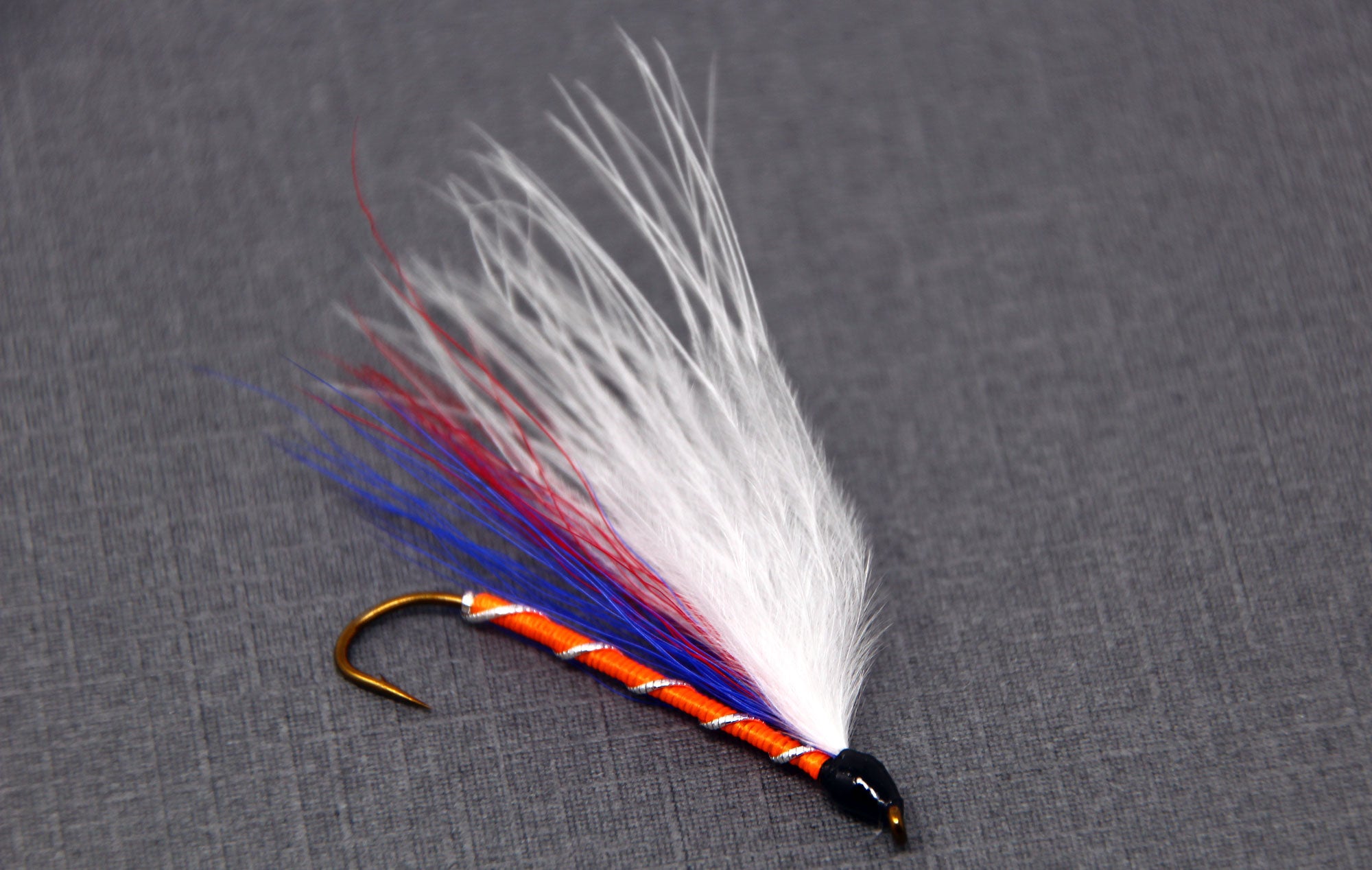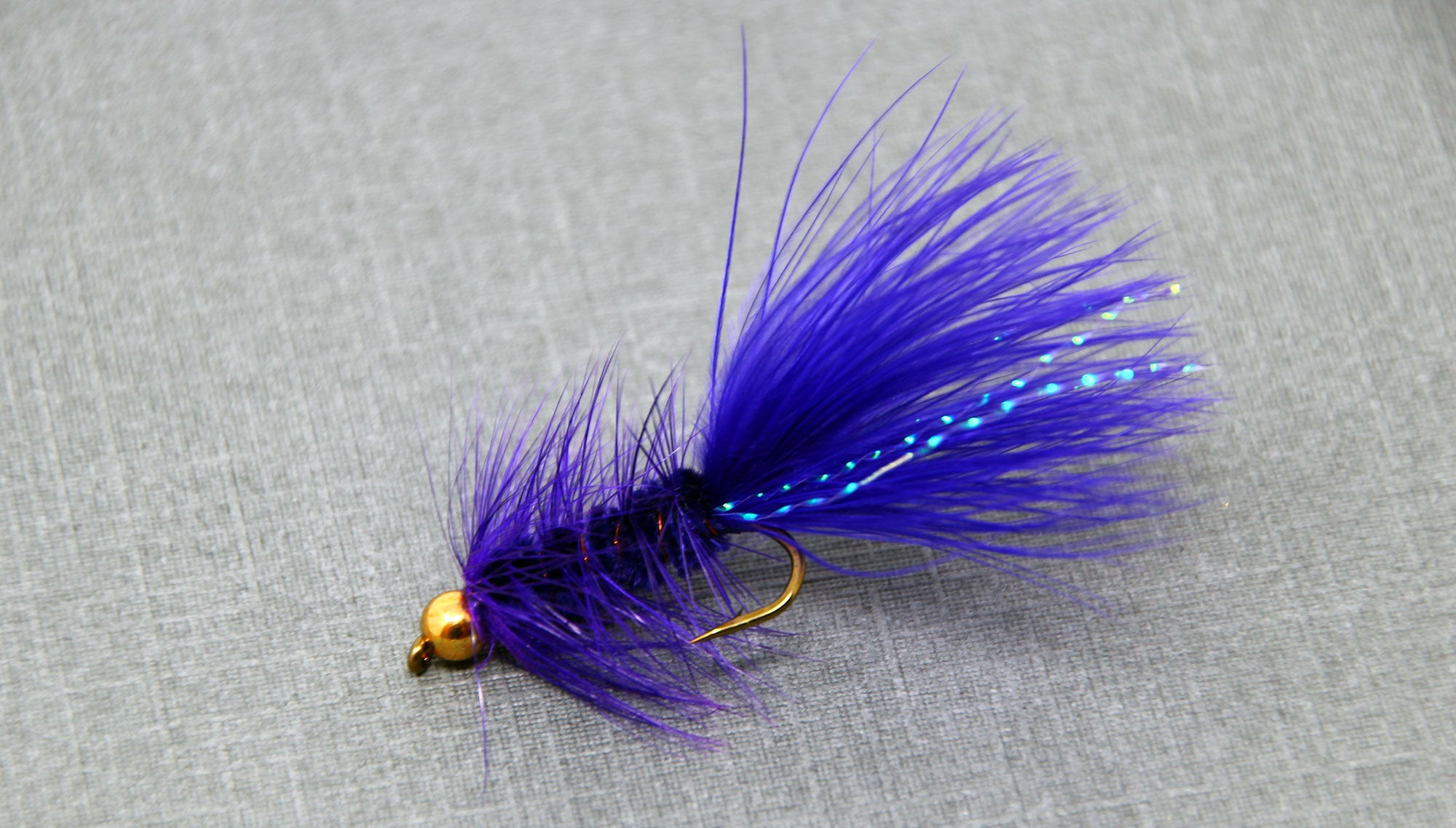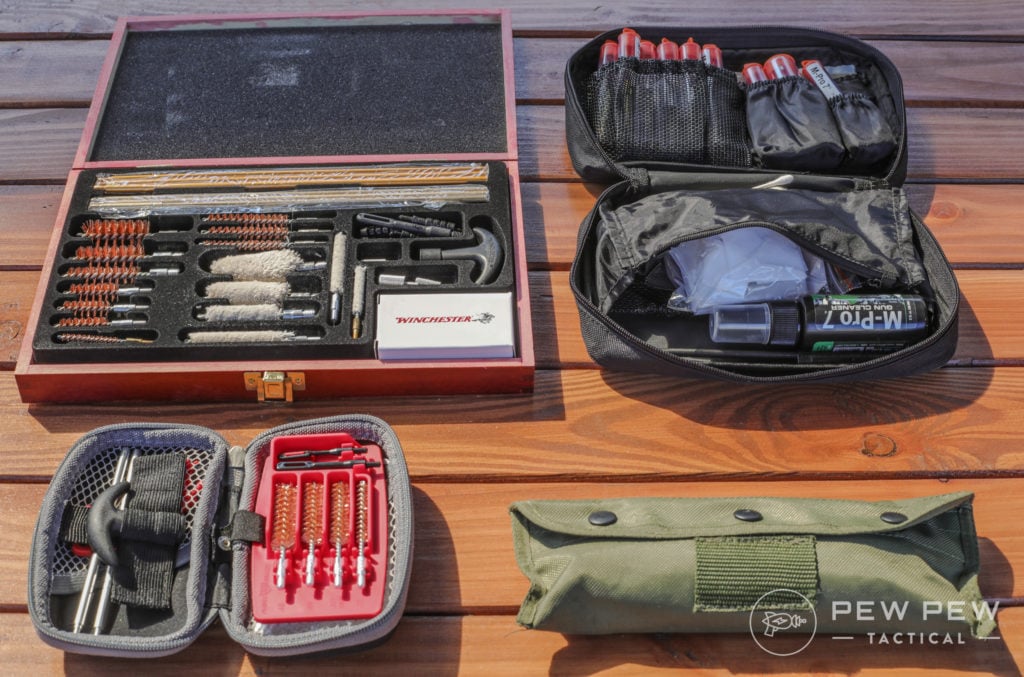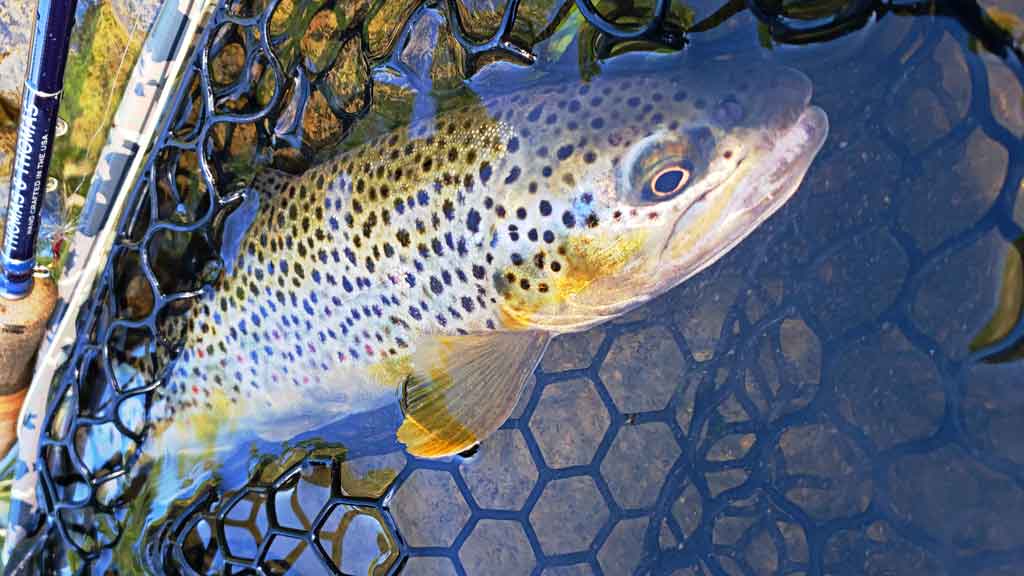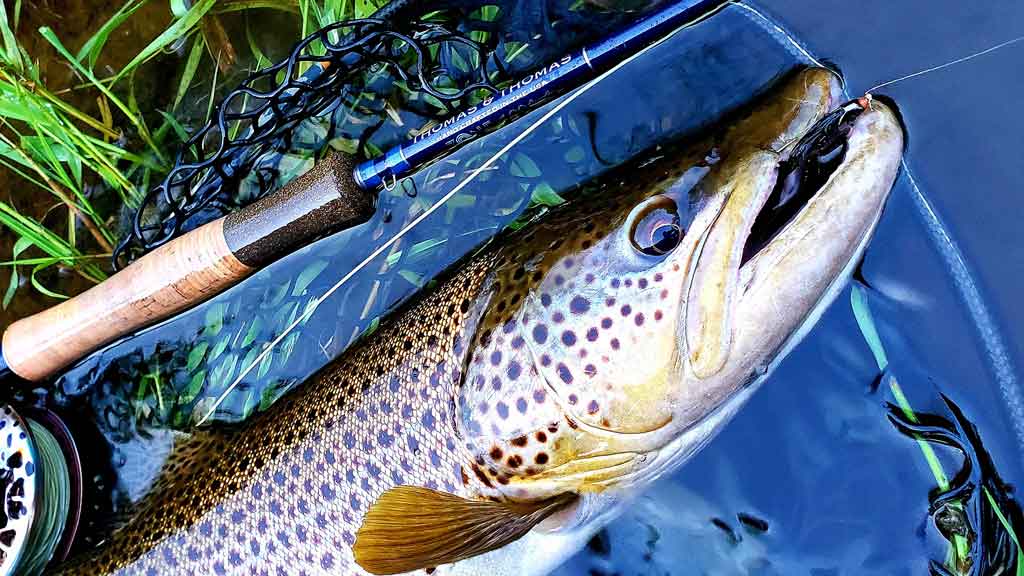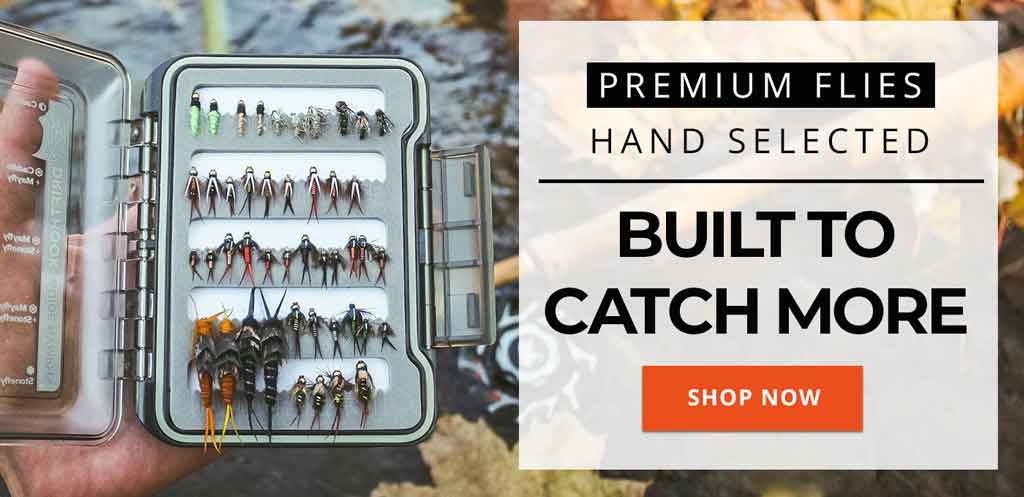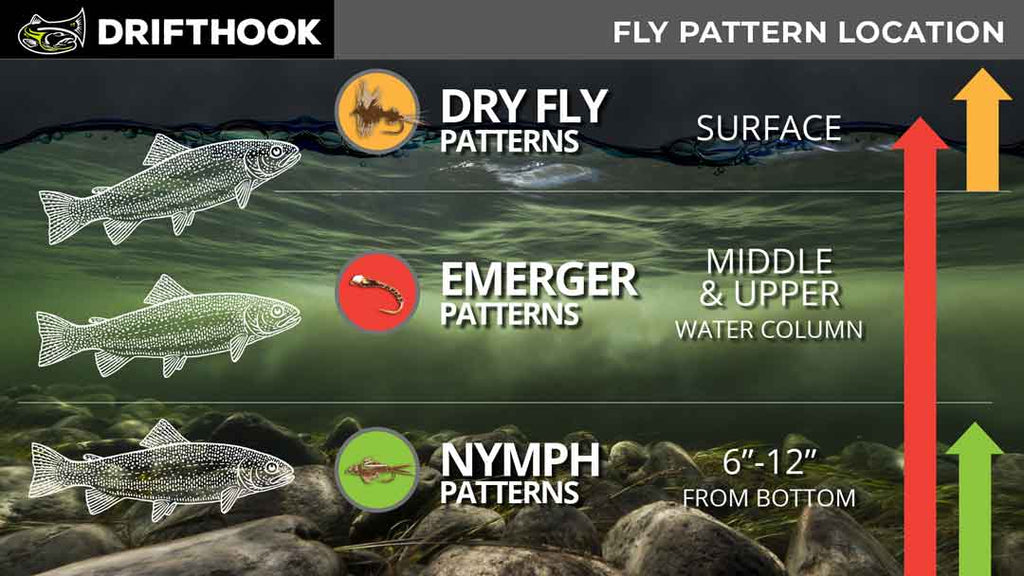Hi there fellow anglers! Welcome to our in-depth exploration of the best ice fishing reels out there. Our mission? To equip you with insights you can trust. We’ve extensively researched and tested various reels to ensure our recommendations are nothing short of reliable and well-founded.
For our very top pick, it’s none other than the 13 Fishing Black Betty FreeFall Ghost Window Inline Ice Reel. Versatile, precise, and durable, you’ll be hard-pressed to find a better ice fishing reel.
Now, let’s address a common angler concern: budget. If that didn’t float your boat, we’ve got you covered with an array of seven other wallet-friendly alternatives that don’t compromise on performance. Plus, rest easy knowing our selections are favorites among tournament anglers. Many of the reels we’ve examined aren’t just popular; they’re the top choice of tournament anglers seeking peak performance. This stamp of approval underscores the dependability of these reels.
Ready to begin? We’ve also included key specifications for each reel. This is so as to make your decision-making process a breeze. Whether you’re a seasoned pro or new to the world of icy angling, we’ve got your back. Get ready to discover the ice fishing reels that will raise your frozen lake game—let’s set out on this journey together!
How We Picked the Best Ice Fishing Reels
With the wide variety of ice fishing reels, we had a bit of trouble deciding how many of each to include. Nevertheless, we eventually decided on one baitfeeder, one hybrid, four inline, and three spinning reels.
Then, we filtered them by Amazon reviews to quickly shortlist the more promising ones. From there on, it was a matter of going through each one’s specifications to find the best ones.
Then, we made sure we found some way to test each product. Some we held and cast at the local tackle store, others we owned before or currently, and the remaining ones we asked our other angler buddies for a review.
In the end, these were the eight best ice fishing reels on the market
The 8 Best Ice Fishing Reels
Note that we’ve included both spinning and inline ice fishing reels, and these are two separate types of reels. We’ll explain the pros and cons later on, so for now, just focus on finding the best ice fishing reel for yourself.
Best Overall
1. 13 Fishing Black Betty FreeFall Ghost Window Inline Ice Reel
- Ball Bearings: 4+1
- Gear Ratio: 2.5:1
- Max Drag Weight: 6.6 pounds
The 13 Fishing Black Betty FreeFall Ghost Window Inline Ice Reel emerges as our top pick. With a striking blend of innovative design and performance-driven features, this reel takes the lead. What sets it apart is its versatile nature. It offers both left and right-hand retrieve interchangeability, catering to ice anglers of all preferences. Furthermore, its 1:1 gear ratio, coupled with the FreeFall trigger system, facilitates efficient line control. This enhances your ice fishing experience to new heights.
Positives: This reel presents ice anglers with a groundbreaking approach to ice fishing, thanks to its FreeFall trigger system. This mechanism provides precise control over line release and retrieval. This greatly boosts your chances of success in varying fishing conditions. This reel’s compatibility with both left and right-hand retrieves also ensures all anglers can use it. Moreover, its impressive gear ratio enhances the speed and accuracy of your line management. This further contributes to more effective ice fishing sessions.
Negatives: While this reel boasts remarkable features, it’s worth noting that this comes at a higher price point than your average ice fishing reel. Additionally, the learning curve associated with the FreeFall trigger system may require some time to achieve optimal performance.
Personal Experience: After personally testing this reel, I found the FreeFall trigger system to be a game-changer in terms of line management. Its intuitive design allowed me to precisely control my line’s descent and retrieval. This gave me a noticeable edge in adapting to changing fishing conditions. I also liked the dual retrieve option, catering to both left and right-handed anglers. It’s worth noting that while the initial price might seem steep, the benefits of the innovative technology more than justify the investment. This is especially so for those seeking a competitive edge in ice fishing.
Amazon Reviews Insight: Scouring through Amazon reviews, it’s evident that many users appreciate the FreeFall trigger system. However, some have noted a brief adjustment period to master its usage. While the price point is recognized as an investment, numerous users attest to the tangible benefits this reel provides in terms of line control and overall efficiency.
If you’re on the hunt for a reel that encapsulates innovation, adaptability, and performance, this reel should be at the top of your list. Its unique features and overall effectiveness at a reasonable price make it an extremely strong contender.
Best Hybrid
2. Clam Gravity Elite Inline Hybrid
- Gear ratio: 3.6:1
- Ball Bearings. 3+1
- Max Drag Weight: 7 pounds
The Clam Gravity Elite Inline Hybrid offers a combination of clever design and versatile functionality. It seamlessly bridges the gap between inline and spinning reels, providing anglers the best of both worlds. Its hybrid design allows for smooth line release and retrieval, enhanced by a highly responsive drag system. This system adapts to varying fish sizes and fighting strengths. The Gravity Elite’s ingenious engineering also ensures that it excels across different ice fishing scenarios.
Positives: This reel deserves accolades for its unique fusion of inline reel and spinning reel features. This hybrid design grants anglers the flexibility to adapt their fishing style as needed. This makes it an excellent choice for a range of ice fishing conditions. The reel’s responsiveness in line control, paired with a reliable drag system, underscores its versatile nature. Additionally, its ergonomic construction and grip allow for long fishing sessions without fatigue.
Negatives: While this reel excels in its hybrid functionality, there may be a slight learning curve. This is particularly so for anglers accustomed to traditional reel types. Additionally, the price point is a tad higher than standalone inline or spinning reels. However, considering the amalgamation of features, this investment can be seen as a ticket to a diverse and adaptable ice fishing trip.
Personal Experience: Having put this reel to the test, I was impressed by how naturally it could switch from inline to spinning and vice versa. Its smooth drag and swift line release enabled me to adapt to various fish sizes and resistances without missing a beat. I particularly appreciated its ergonomic design. I was able to fish for two hours without any discomfort. While the initial learning curve is real, the payoffs in terms of adaptability and versatility are more than worth the effort.
Amazon Reviews Insight: Reviews from Amazon users echo this reel’s unique value proposition. Many highlight its ability to seamlessly switch between inline and spinning features. They also mentioned it provided an advantage across diverse fishing situations. Users acknowledged the initial learning curve. But at the same time, they also said the hybrid design opens up new possibilities and makes the investment worthwhile. It’s clear that anglers who value versatility in their ice fishing gear find this reel to be indispensable.
For those seeking a reel that combines the best of both inline and spinning worlds, this reel presents an enticing solution. You’re getting hybrid prowess combined with responsive performance. It’s a standout choice for ice fishing enthusiasts aiming to maximize adaptability and efficiency on the frozen water.
Best Value
3. Daiwa Crossfire CF500-3Bi
- Ball Bearings: 3+1
- Gear Ratio: 5.3:1
- Max Drag Weight: 4.4 pounds
The Daiwa Crossfire CF500-3Bi secures its position as the best value ice fishing reel. It delivers a commendable blend of performance and affordability. This reel embodies the essence of cost-effectiveness without compromising on essential features. With a smooth and consistent drag system, this reel caters to both novice and experienced anglers alike. Its lightweight construction further enhances its appeal. It’s without doubt an ideal choice to ice fish for extended periods of time.
Positives: The Daiwa Crossfire CF500-3Bi earns its spot as a budget-friendly yet dependable option with its consistent drag performance. Anglers can rely on its smooth operation to handle a range of fish sizes. The lightweight design adds to its appeal, allowing anglers to enjoy hours on the ice without discomfort. Its modest price point makes it perfect for those looking for a reliable ice fishing reel without breaking the bank.
Negatives: While this reel excels in providing value, some users have noted that it may not be as suitable for larger fish or more challenging fishing conditions. Its affordability is achieved by focusing on the essentials. This means anglers looking for advanced features might need to consider other options. Despite these limitations, this reel delivers impressive performance within its niche.
Personal Experience: Having tested it out, I appreciated its simplicity and straightforward functionality. Its drag system proved reliable in managing fish of varying sizes, providing a satisfying experience. Its lightweight design contributed to a comfortable and enjoyable fishing session, even during extended periods. While it might not be the most advanced option available, its value proposition makes it an excellent entry point. For those looking to venture into ice fishing or seeking a budget-friendly solution, this is it.
Amazon Reviews Insight: Insights from Amazon reviews echo its value-driven approach. Users frequently commend its smooth drag operation and lightweight build, making it a solid choice for casual anglers and beginners. While some acknowledge its limitations in handling larger fish, they appreciate the balance between cost and performance.
For anglers looking to maximize value without compromising on performance, this reel offers a compelling solution. Its dependable drag system, lightweight design, and budget-friendly pricing make it an attractive choice. Those new to ice fishing or seeking a solid affordable ice fishing reel will want to give it a shot.
Best Baitfeeder
4. Okuma Ceymar Baitfeeder Spinning Reel
- Ball Bearings: 7+1
- Gear Ratio: 5.0:1
- Max Drag Weight: 6.6-17.6 pounds
The Okuma Ceymar Baitfeeder Spinning Reel takes center stage as the best baitfeeder ice fishing reel, bringing a balance of precision and versatility to the table. Designed to cater to the preferences of anglers who require a baitfeeder mechanism, this reel offers seamless transition between traditional spinning and baitfeeder modes. Its innovative approach allows for controlled line release and retrieval during live bait presentations, enhancing your chances of successful catches. The lightweight construction and ergonomic design further elevate its status as a standout choice for baitfeeder enthusiasts.
Positives: It shines in its specialized baitfeeder feature, enabling anglers to present live bait with finesse and control. The seamless transition between baitfeeder and spinning modes provides flexibility and precision during various fishing scenarios. Its lightweight design is optimized for prolonged fishing sessions, while its ergonomic grip ensures comfort and ease of use. The baitfeeder mechanism, combined with Okuma’s renowned build quality, makes this reel a reliable tool for angling success.
Negatives: While this reel offers advanced baitfeeder functionality, it may not cater to anglers seeking a traditional spinning experience exclusively. The baitfeeder mechanism might require some adjustment for those new to the concept, but with practice, it becomes a valuable asset. Additionally, the reel’s price point may be higher than basic spinning reels due to its specialized features.
Personal Experience: Having put this reel through its paces, I found its baitfeeder functionality to be a game-changer for live bait presentations. The ability to control line release while keeping the reel engaged enhanced my ability to attract and hook fish effectively. The lightweight build and ergonomic grip were instrumental in maintaining comfort during long fishing sessions. While there is a learning curve associated with the baitfeeder mechanism, the rewards in terms of presentation control and angling success make it a worthwhile investment.
Amazon Reviews Insight: Insights from Amazon reviews emphasize this reel’s unique baitfeeder functionality. Many users appreciate its smooth transition between modes and its impact on live bait presentations. While some mention an initial learning curve, they acknowledge the value of the baitfeeder feature in enhancing fishing outcomes. Overall, anglers seeking precise live bait presentations find the Ceymar Baitfeeder to be a reliable companion on the ice.
For those seeking a specialized reel tailored for live bait presentations, this is an exceptional choice. Its innovative baitfeeder mechanism, combined with user-friendly design and build quality, positions it as an essential tool for anglers who prioritize controlled and effective live bait fishing experiences.
Best Spinning
5. Abu Garcia Max Ice Fishing Spinning Reel
- Ball Bearings: 4+1
- Gear Ratio: 5.1 – 5.2:1
- Max Drag Weight: 7-14 pounds
The Abu Garcia Max Ice Fishing Spinning Reel emerges as the best spinning reel for ice fishing, striking a harmonious balance between performance and convenience. Designed by a brand known for its quality, this reel delivers smooth and reliable operation, making it a dependable companion on frozen waters. Its lightweight construction contributes to fatigue-free angling, ensuring you can enjoy extended fishing sessions with ease. With a focus on precision and usability, the Max Ice Fishing Spinning Reel is a top-notch choice for anglers seeking a versatile and efficient spinning reel.
Positives: This reel shines in its ability to provide smooth and consistent performance, a hallmark of the Abu Garcia brand. Its responsive drag system ensures a reliable control over fish of varying sizes, enhancing your chances of successful catches. The reel’s lightweight design is optimized for ice fishing conditions, allowing anglers to stay comfortable during long hours on the ice. Its smooth operation and user-friendly features position it as a reliable and efficient tool for ice fishing enthusiasts.
Negatives: While this reel excels in delivering a reliable spinning experience, the reel’s spool size might not accommodate larger lines as effectively. Additionally, while it offers quality performance, its price point may be higher compared to entry-level spinning reels. Nonetheless, the Abu Garcia Max Ice Fishing Spinning Reel’s track record of consistent operation justifies the investment for anglers seeking a dependable spinning reel.
Personal Experience: After putting the Abu Garcia Max Ice to the test, I was impressed by its smooth and responsive performance. Its drag system provided consistent control, allowing me to handle fish with precision and confidence. The lightweight build contributed to a comfortable angling experience, even during extended sessions. While there are minor limitations in terms of spool size, the reel’s overall reliability and Abu Garcia’s reputation make it a solid choice for ice fishing endeavors.
Amazon Reviews Insight: Insights from Amazon reviews reinforce this reel’s reputation for consistent performance. Users frequently highlight its smooth drag operation and lightweight design as standout features. While some mention spool size limitations, they appreciate the overall usability and precision that the reel provides. For ice fishing enthusiasts who value a dependable spinning reel, the Max Ice Fishing Spinning Reel offers a reliable option.
For anglers in search of a versatile and dependable spinning ice fishing reel, this reel delivers on multiple fronts. Its responsive performance, lightweight design, and consistent operation make it a top contender for those seeking a spinning reel that combines efficiency and ease of use on frozen waters.
Best Lightweight
6. KastKing Centron Spinning Reel
- Ball Bearings: 9+1
- Gear Ratio: 4.5-5.2:1
- Max Drag Weight: 11-17.5 pounds
The KastKing Centron Spinning Reel is our best lightweight ice fishing reel, catering to anglers who prioritize comfort and effortless handling. With its feather-light construction and ergonomic design, this reel minimizes fatigue during extended fishing sessions, making it a go-to choice for anglers of all skill levels. Its reliable drag system further contributes to a smooth and responsive fishing experience, ensuring successful catches without compromising on comfort.
Positives: This reel excels in providing an ultra-lightweight solution for ice fishing enthusiasts. Its ergonomic build ensures that anglers can fish for hours without feeling the strain of a heavy reel. The responsive drag system contributes to a smooth and efficient angling experience, enhancing your ability to land fish of varying sizes. Its budget-friendly pricing also adds to its appeal, making it an accessible option for those seeking a lightweight and reliable reel.
Negatives: While this reel stands out for its lightweight design, some users have mentioned that its line capacity may be comparatively smaller than other reels. Additionally, while it prioritizes lightweight construction, some anglers who prefer a more substantial feel in their reels might find it less suitable. Nonetheless, the Centron Spinning Reel’s focus on comfort and efficiency remains its primary strength.
Personal Experience: After using the KastKing Centron, I found its lightweight build to be a game-changer, particularly during long ice fishing sessions. Its ergonomic grip and smooth drag system allowed me to focus on the fishing experience without being hindered by reel weight. While the line capacity might be limited for certain scenarios, the Centron Spinning Reel’s lightweight nature and responsive performance make it an excellent companion for comfort-focused anglers.
Amazon Reviews Insight: Insights from Amazon reviews emphasize this reel’s lightweight design and comfortable handling. Users frequently highlight its suitability for extended fishing sessions without discomfort. While some mention it’s not able to store too much line, they appreciate its overall efficiency and accessible price point. For anglers seeking a lightweight and ergonomic solution for ice fishing, the Centron Spinning Reel offers a reliable and comfortable option.
For those prioritizing a lightweight and comfortable ice fishing reel, this reel presents an appealing choice. Its ergonomic design, responsive drag system, and budget-friendly pricing align to provide anglers with an accessible and enjoyable fishing experience on frozen waters.
Best Material
7. Piscifun ICX Carbon Ice Fishing Reel
- Ball Bearings: 5+1
- Gear Ratio: 5.2:1
- Max Drag Weight: 6.6-17.6 pounds
The Piscifun ICX Carbon Ice Fishing Reel stands out as the best choice for anglers who value advanced materials and construction. This reel boasts a carbon-fiber build, which not only contributes to its lightweight nature but also enhances its durability and performance. The inclusion of a magnetic drop system and dual model lever adds an element of precision to your ice fishing endeavors, enabling controlled line management and responsive operation.
Positives: This reel impresses with its innovative use of carbon-fiber construction. This material choice ensures a lightweight reel that doesn’t compromise on strength, making it ideal for ice fishing. The incorporation of a magnetic drop system and dual model lever provides anglers with increased control over line release and retrieval, enhancing accuracy during crucial moments. The reel’s high-speed gear ratio further adds to its appeal, allowing for quick and efficient line management.
Negatives: While this reel excels in carbon-fiber construction, some users have noted that the dual model lever may require a slight learning curve to master effectively. Additionally, its advanced features and materials contribute to a slightly higher price point compared to traditional reels. Nonetheless, the reel’s innovation and performance make it a compelling choice for anglers seeking a balance between advanced features and efficiency.
Personal Experience: After using this reel, I was impressed by its lightweight feel and advanced features. The carbon-fiber construction translated to a durable yet comfortable reel, enhancing my ice fishing trip. The magnetic drop system and dual model lever allowed for precise control over line management, particularly during critical moments. While the learning curve for the dual model lever is real, the benefits of this feature are evident in improved line control and accuracy.
Amazon Reviews Insight: Amazon reviews highlight the Piscifun ICX Carbon’s advanced construction and innovative features. Users frequently appreciate its carbon-fiber build, which contributes to a lightweight yet durable reel. Some mention a brief adjustment period for the dual model lever, but they emphasize the advantages it brings to line management. While the reel’s price point might be higher, those seeking a technologically advanced and efficient ice fishing reel find value in the ICX Carbon model.
For anglers seeking a reel that incorporates cutting-edge materials and features, this reel offers an enticing solution. Its carbon fiber construction, magnetic drop system, and high-speed gear ratio combine to provide an advanced and efficient tool for ice fishing enthusiasts who prioritize innovation and performance.
Best Adaptation
8. Pflueger Trion Inline Spinning Reel
- Ball Bearings: 6+1
- Gear Ratio: 5.2-6.3:1
- Max Drag Weight: 6-10 pounds
The Pflueger Trion Inline Spinning Reel earns its title as the best inline spinning reel for ice fishing by combining user-friendly design with reliable performance. This reel seamlessly integrates the benefits of both inline and spinning designs, offering anglers a versatile tool for various fishing scenarios. Its smooth drag system ensures controlled line release and retrieval, while the lightweight build contributes to a comfortable and enjoyable ice fishing experience.
Positives: This reel excels in providing anglers with the convenience of an inline ice fishing reel and the familiarity of a spinning reel. Its responsive drag system enables precise control over fish of varying sizes, contributing to successful catches. The reel’s lightweight construction is tailored for ice fishing conditions, ensuring that anglers can spend hours on the ice without discomfort. The seamless transition between inline and spinning modes makes it a versatile choice for different fishing techniques.
Negatives: While the Pflueger Trion is designed to bridge the gap between inline and spinning reels, some users have mentioned that the transition may require a slight adjustment period, especially for those new to inline designs. Additionally, its spool capacity might not be as large as some standalone spinning reels. However, the reel’s adaptability and performance across both modes remain its standout features.
Personal Experience: Having used this reel, I appreciated its ability to seamlessly switch between inline and spinning modes. The smooth drag operation and ergonomic grip enhanced my ability to manage line during various fishing scenarios. The lightweight build contributed to a comfortable fishing experience, allowing me to focus on the catch without being weighed down. While there might be a learning curve associated with inline ice fishing reels, the Trion Inline Spinning Reel’s versatility makes it an excellent choice for ice fishing enthusiasts.
Amazon Reviews Insight: Amazon reviews highlight this reel’s adaptability and ease of use. Users often praise its smooth drag performance and lightweight construction, which make it suitable for extended ice fishing sessions. While some mention a short learning curve associated with inline designs, they appreciate the convenience of seamlessly switching between inline and spinning modes. For anglers seeking a versatile and user-friendly ice fishing reel, this reel offers a reliable and adaptable solution.
For those in search of a reel that combines the best of both inline and spinning worlds, this reel stands out as an exceptional choice. Its versatility, smooth drag operation, and lightweight construction make it a go-to option for anglers who prioritize adaptability and comfort on the frozen water.
What to Consider Before Buying an Ice Fishing Reel
When embarking on your ice fishing adventures, selecting the ideal reel is of paramount importance. Ice fishing can be demanding. So having the right reel can make all the difference in your success on the frozen waters. In this comprehensive buying guide, we will explore the critical factors to consider when choosing the perfect ice fishing reel. And as promised, we’ve put a special focus on the choice between spinning reels and inline reels.
Spinning Reels VS Inline Reels
Spinning Reels:
- Versatility: The 13 Fishing Black Betty FreeFall Ghost Window Inline Ice Reel is an excellent choice if you prefer a spinning ice fishing reel for versatility. It stands out as the best overall option and offers both left and right-hand retrieve interchangeability to cater to anglers of all preferences.
- Smooth Drag: This reel features a smooth and responsive drag system, allowing precise control over the tension on your line, making it ideal for ice fishing, where control is critical.
- Gear Ratio: With a gear ratio of 2.5:1, it offers efficient line management, crucial for ice fishing. The FreeFall trigger system enhances line control, making it a top choice for various ice fishing techniques.
Inline Reels:
Inline reels are much less prone to line twist than spinning reels. Basicallt, line twist is the biggest advantage of inline reels over spinning reels.
- Recommendation 2: Clam Gravity Elite Inline Hybrid (Best Hybrid)
- Baitfeeder Mechanism: The Clam Gravity Elite Inline Hybrid is the best choice if you prefer an inline ice fishing reel and the baitfeeder mechanism. This reel seamlessly bridges the gap between inline and spinning reels, offering versatility and smooth line release.
- Precise Line Control: The inline design provides precise control over line release, a significant advantage when targeting cautious fish during ice fishing.
- Compact Design: Its compact and lightweight design makes it ideal for ice fishing, where portability is crucial.
Play in the Reel
When evaluating the play in your reel, consider the following:
- Play Reduction: The Daiwa Crossfire CF500-3Bi is an excellent choice for reducing play in your reel while providing great value. It offers a smooth and consistent drag system, ensuring precise control over your line’s tension.
- Affordability: This reel strikes a balance between performance and affordability, making it accessible to anglers seeking a reliable ice fishing reel without breaking the bank.
- Line Capacity: With a gear ratio of 5.3:1, it allows you to retrieve line efficiently, and is suitable for various ice fishing scenarios.
Gear Ratios
When considering gear ratios for quicker line retrieval, think about the following reel:
- Gear Ratio: This reel boasts a gear ratio of 2.5:1, offering efficient line retrieval, especially useful when dealing with active or fast-swimming fish during ice fishing.
- Versatility: While excelling in gear ratio, it also provides versatility with left and right-hand retrieve options, accommodating various angler preferences.
Ice Build Up
- Ice Build-Up Resistance: The Clam Gravity Elite Inline Hybrid is an excellent choice for preventing ice build-up in frigid conditions. Its hybrid design and sealed components reduce the risk of freezing, ensuring that your reel remains functional even in the coldest of environments.
- Versatility: While excelling in ice build-up resistance, this reel also offers the versatility of inline and spinning features, catering to various ice fishing scenarios.
- Baitfeeder Mechanism: If you prefer live bait presentations, the baitfeeder mechanism of this reel adds an element of precision to your ice fishing endeavors while keeping ice accumulation in check.
Durability and Materials
- Durability: The Daiwa Crossfire CF500-3Bi is an ideal choice for durability, ensuring your reel can withstand the challenges of ice fishing. Its build quality and corrosion-resistant materials make it robust and reliable even in freezing temperatures.
- Affordability: This reel offers durability without breaking the bank, making it a valuable investment for anglers looking for a budget-friendly yet sturdy ice fishing reel.
- Consistent Drag: The smooth and consistent drag system enhances durability by minimizing wear and tear on the reel components during fights with fish, contributing to a longer lifespan.
My Verdict
In conclusion, our journey through the realm of ice fishing reels has been nothing short of illuminating. We’ve explored a diverse range of options, each tailored to cater to different preferences and fishing styles. From versatile inline designs to responsive spinning reels, the choices are as vast as the frozen landscapes you’ll tread upon.
If you’re still pondering which reel to add to your arsenal of ice fishing tackle, my resounding recommendation is the 13 Fishing Black Betty FreeFall Ghost Window Inline Ice Reel. This gem not only offers precise control with its innovative FreeFall system but also embodies durability and functionality. It stands out as the perfect companion for your ice fishing escapades, capable of tackling a spectrum of conditions and fish sizes.
As you embark on your icy adventures, keep in mind the factors that truly matter – play in the reel, gear ratios, resistance to ice build-up, and material durability. Armed with this knowledge, you’re poised to select a reel that matches your technique and elevates your fishing experiences on the frozen expanse.
Tight lines, fellow anglers, and may your days on the ice be filled with successful catches and unforgettable moments. Oh, and here are the best ice fishing rods if you haven’t gotten one yet.











![Air gun 101: The differences between .177 & .22 – Which jobs they do best ? [Infographic]](https://airgunmaniac.b-cdn.net/wp-content/uploads/2024/11/1773-218x150.jpeg)






























